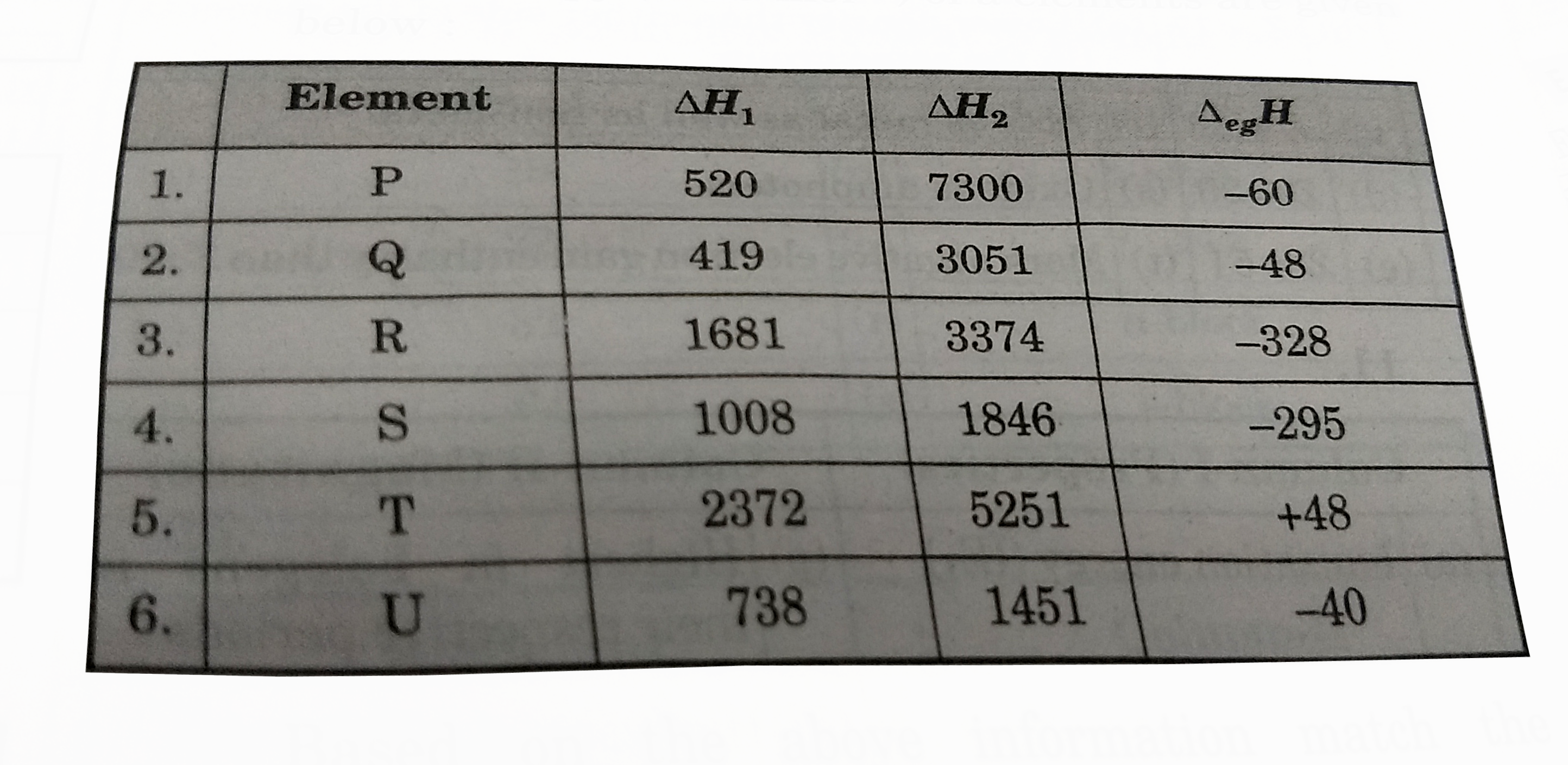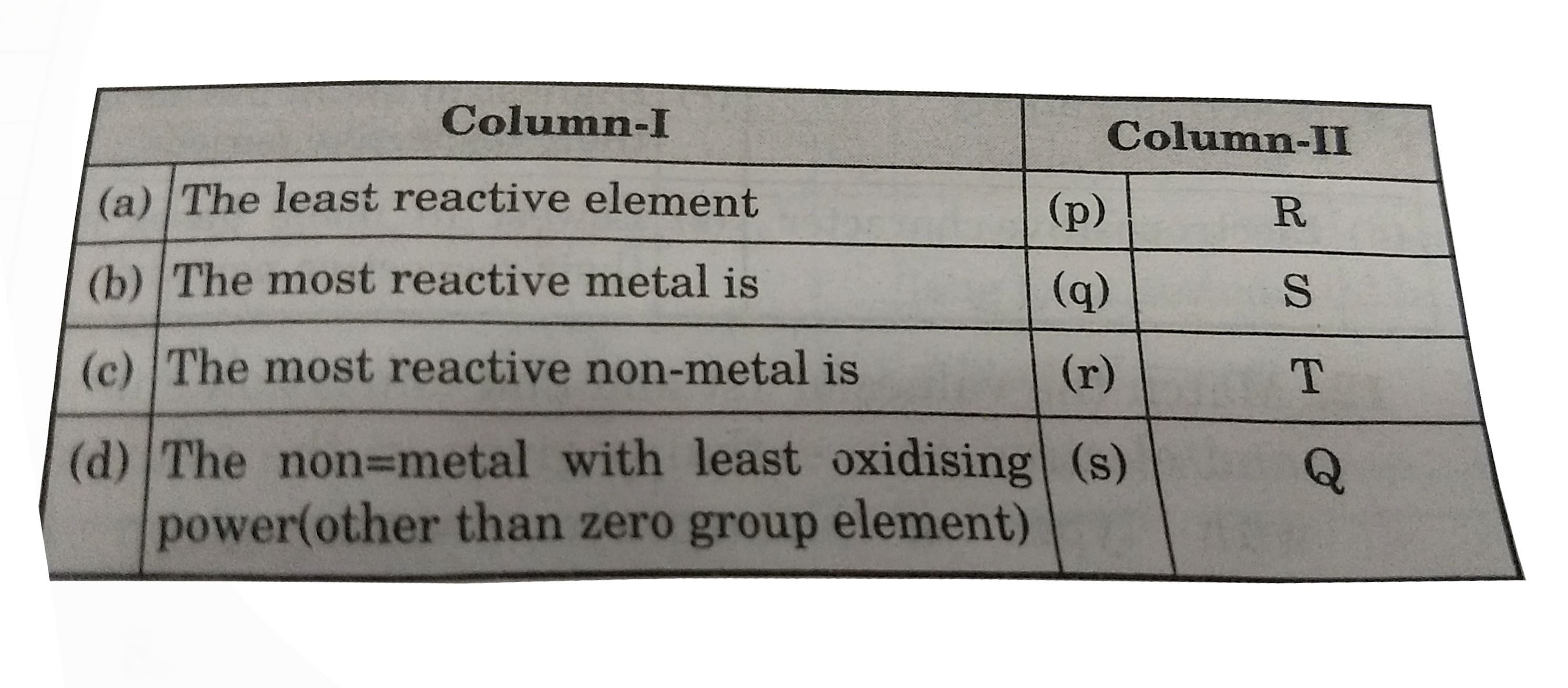Calculate lattice energy for the change,
Li+(g)+Cl−(g)→LiCl(g)
Given that
ΔHsublimation of Li=160.67kJmol−1,ΔHDissociation of Cl2=244.34kJmol−1,ΔHionisation of Li(g)=520.07kJmol−1,ΔHE.A of Cl(g)=−365.26kJmol−1,ΔHf of LiCl(s)=−401.66kJmol−1,Solution in Tamil

ΔHf=ΔH1+ΔH2+ΔH3+2ΔH4+u
−795=121+2422+242.8+(2×355)+u
−795=2785.8−710+u
−795=2075.8+u
u=−795−2075.8=−2870.8kJ.mol−1
Topper's Solved these Questions
- BOOK - SURA PUBLICATIONCHAPTER - THERMODYNAMICS EXERCISE - ADDITIONAL QUESTIONS87videos
THERMODYNAMICS
- BOOK - SURA PUBLICATIONCHAPTER - THERMODYNAMICS EXERCISE - ADDITIONAL SHORT ANSWERS46videos
THERMODYNAMICS
- BOOK - SURA PUBLICATIONCHAPTER - THERMODYNAMICS EXERCISE - NUMERICAL PROBLEMS19videos
THERMODYNAMICS
- BOOK - SURA PUBLICATIONCHAPTER - SURAS. MODEL QUESTION PAPER - 2 EXERCISE - Part - D (Answer all five questions:)15videos
SURAS. MODEL QUESTION PAPER - 2
Similar Questions
Which of the following is an extensive property?
05:23View SolutionGiven the relation between enthalpy (H) and internal energy (U).
03:15View SolutionThe entropy change in the conversion of water to ice at 272 k for the system is −22.88JK−1mol−1 and that of surrounding is +24.85jk−1mol−1 State whether the process is spontaneous or not ?
03:36View SolutionWrite down the postulates of Bohr atom model.
03:08View SolutionCalculate the lattice energy of the reaction Li^(o+)(g) +CI^(Theta) (g) rarr LiCI(s) from the following data: Delta_("sub")H^(Theta)(Li) = 160.67 kJ mol^(-1), (1)/(2)D(CI_(2)) = 122.17 kJ mol^(-1) IP(Li) = 520.07 kJ mol^(-1),E_(A)(CI) = - 365.26 kJ mol^(-1) and Delta_(f)H^(Theta)(LiCI) =- 401.66 kJ mol^(-1)
View SolutionGiven C_(2)H_(2)(g)+H_(2)(g)rarrC_(2)H_(4)(g): DeltaH^(@)=-175 " kJ mol"^(-1) DeltaH_(f(C_(2)H_(4),g))^(@)=50 " kJ mol"^(-1), DeltaH_(f(H_(2)O,l))^(@)=-280 " kJ mol"^(-1), DeltaH_(f(CO_(2)g))^(@)=-390 " kJ mol"^(-1) If DeltaH^(@) is enthalpy of combustion (in kJ "mol"^(-1) ) of C_(2)H_(2) (g), then calculate the value of |(DeltaH^(@))/(257)|
02:44View SolutionThe first (ΔH1) and second (ΔH2) ionisation enthalpies (in kJmol−1) and the (ΔHeg) electron gain enthalpy (in kJmol−1) of a elements are given below:

Based on the above information match the following columns.
 02:52View Solution
02:52View SolutionCalculate lattice energy for the change,
Li+(g)+Cl−(g)→LiCl(g)
Given that
ΔHsublimation of Li=160.67kJmol−1,ΔHDissociation of Cl2=244.34kJmol−1,ΔHionisation of Li(g)=520.07kJmol−1,ΔHE.A of Cl(g)=−365.26kJmol−1,ΔHf of LiCl(s)=−401.66kJmol−1,05:57View SolutionWhat is the Bond energy (In kJ/ mol) of C−H in Methane from the following data?
ΔHf[CO2(g)]=−394kJ/molΔHf[H2O(l)]=−285kJ/molΔHsiblimation{Carbon (graphite)}=+716kJ/molΔHcombustion[CH4(g)]=−890kJ/molBond energy(H−H)=435kJ/mol03:28View SolutionThe ΔH0f(KF,s) is −563kJmol−1. The ionization enthalpy of K(g) is 419kJmol−1. and the enthalpy of sublimation of potassium is 88kJmol−1. The electron affinity of F(g) is 322kJmol−1 and F−F bond enthalpy is 158kJmol_1. Calculate the lattice enthalpy of KF(s).
The given data are as follows:
(i) K(s)+1/2F2(g)→KF(s) ΔH0f=−563kJmol−1
(ii) K(g)→K+(g)+e− Δ0Ioniz=419kJmol−1
(iii) K(s)→K(g) ΔH0sub=88kJmol−1
(iv) F(g)+e−→F−(g) ΔH0eg=−322kJmol−1
(v) F2(g)→2F(s) ΔH0diss=158kJmol−1
(vi) K+(g)+F−(g)→KF(s) ΔH0L=?View SolutionBond energies of H−HandCl−Cl are 430 kJ mol−1 and 242 kJ mol−1 respectively. ΔHf for HCl is 91 kJ mol−1.
What will be the bond energy of H−Cl?05:18View SolutionConstruct a Born-Haber cycle and use it to calculate the first electron affinity of chlorine. DeltaH_(atom(CI))= +122 kJ mol^(-1) " " DeltaH_(atom(Mg))=+148 kJ mol^(-1) DeltaH_("1st ionisation energy" (Mg))=+738 KJ mol^(-1) " " DeltaH_(2nd " ionisation cnergy"(MgCI_(2))= +1451 kJ mol^(-1) DeltaH _("lattice energy "(MgCI_(2))= -2526 kJ mol^(-1) " " DeltaH_(2nd " formation "(MgCI_(2)) =-641 kJ mol^(-1)
05:00View SolutionGiven C_(2)H_(2)(g)+H_(2)(g)rarrC_(2)H_(4)(g): DeltaH^(@)=-175 " kJ mol"^(-1) DeltaH_(f(C_(2)H_(4),g))^(@)=50 " kJ mol"^(-1), DeltaH_(f(H_(2)O,l))^(@)=-280 " kJ mol"^(-1), DeltaH_(f(CO_(2)g))^(@)=-390 " kJ mol"^(-1) If DeltaH^(@) is enthalpy of combustion (in kJ "mol"^(-1) ) of C_(2)H_(2) (g), then calculate the value of |(DeltaH^(@))/(257)|
03:24View SolutionGiven that bond energies of H - H and Cl -Cl are 430 "kJ/mol"^(-1) and 240 "kJ/mol"^(-1) respectively and DeltaH_(f) for HCI is -90 "kJ/mol"^(-1) , bond enthalpy of HCI is
03:32View SolutionBond energies of H−HandCl−Cl are 430 kJ mol−1 and 242 kJ mol−1 respectively. ΔHf for HCl is 91 kJ mol−1.
What will be the bond energy of H−Cl?03:32View SolutionCalculate the lattice energy of the reaction
Li⊕(g)+CIΘ(g)→LiCI(s)
from the following data:
ΔsubHΘ(Li)=160.67kJmol−1,12D(CI2)=122.17kJmol−1<br>IP(Li)=520.07kJmol−1,EA(CI)=−365.26kJmol−1 and ΔfHΘ(LiCI)=−401.66kJmol−103:32View Solution

